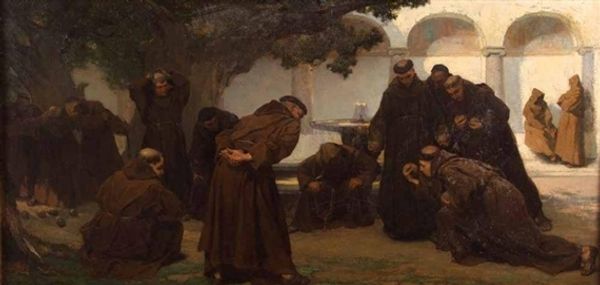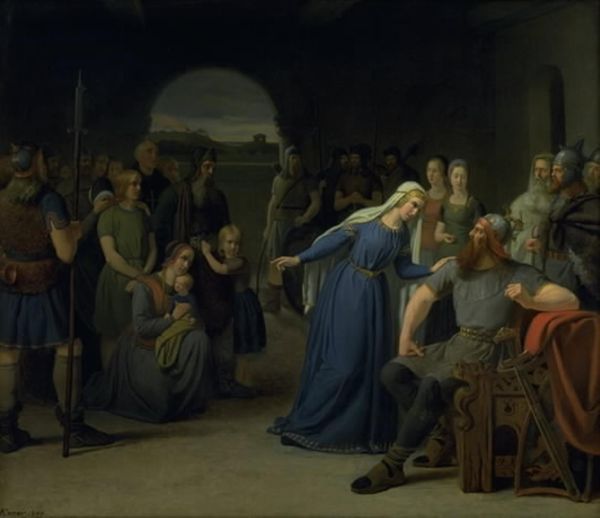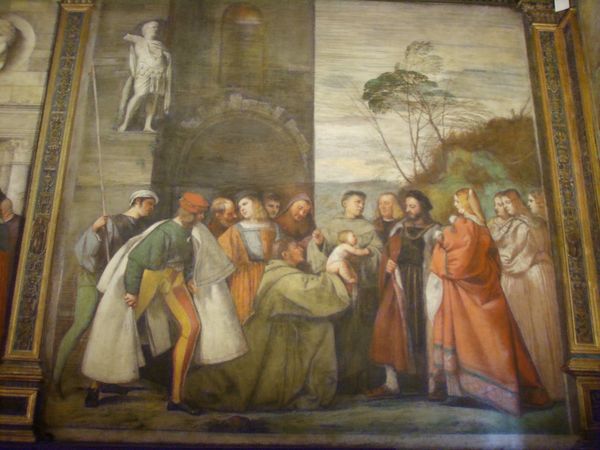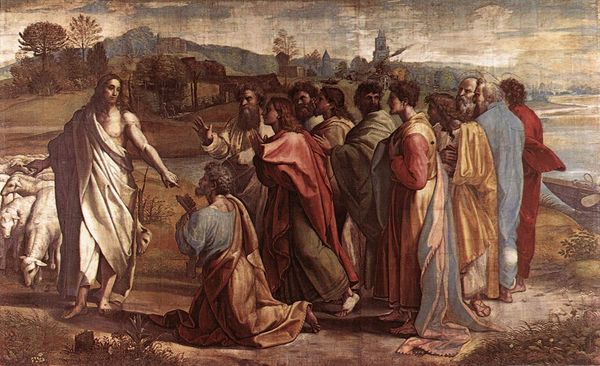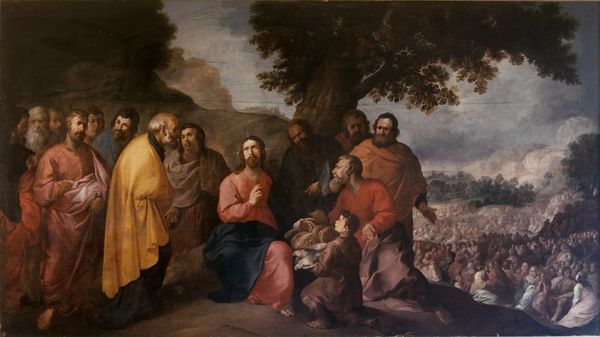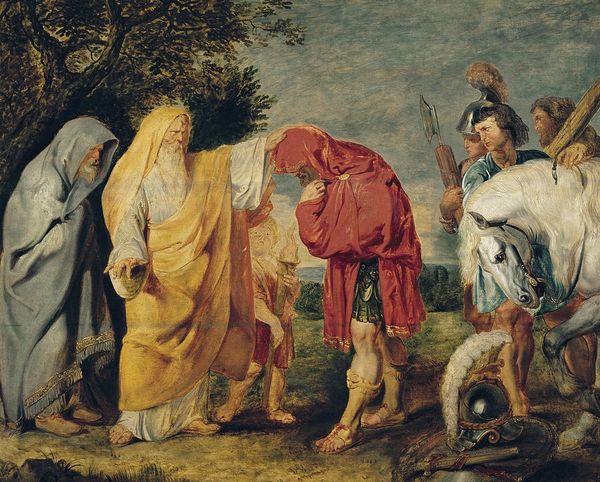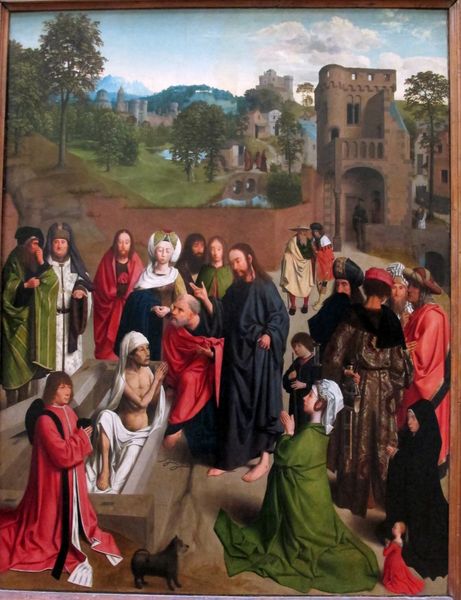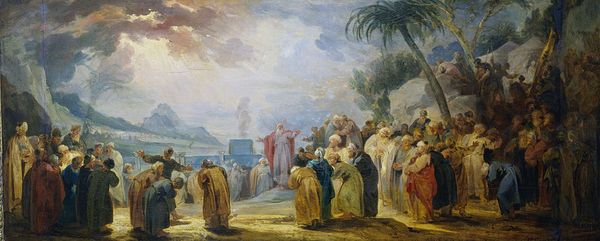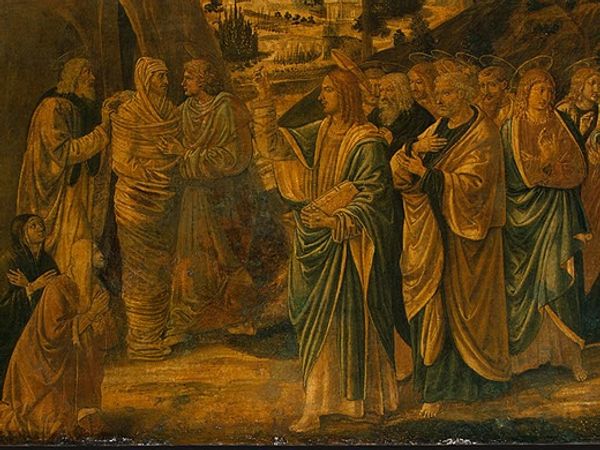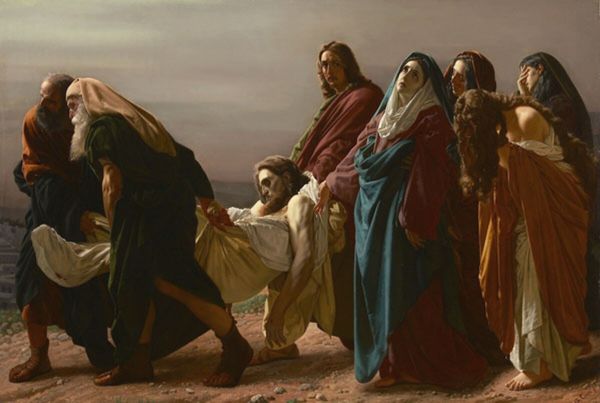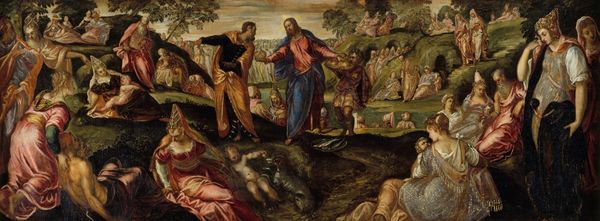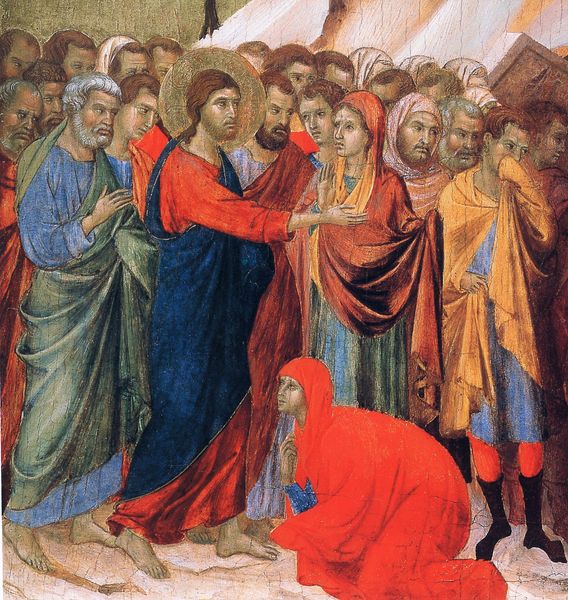
The Blind Man at the Wayside Implores Jesus to Show Mercy 1910
0:00
0:00
painting, oil-paint
#
narrative-art
#
painting
#
oil-paint
#
landscape
#
figuration
#
oil painting
#
history-painting
Dimensions: 147 cm (height) x 229 cm (width) (Netto)
Curator: Niels Larsen Stevns created this oil painting in 1910, its title is “The Blind Man at the Wayside Implores Jesus to Show Mercy.” It’s currently part of the collection here at the SMK. Editor: My first impression is somber. The colors are muted, almost monochromatic, and there's a real sense of desperation in the foreground. You can almost feel the coarse texture of the blind man's robe. Curator: Indeed. It's interesting how Stevns portrays a well-known biblical scene within a distinctly Danish landscape. It underscores the public role of religious art at the time, embedding universal narratives in specific cultural contexts. Editor: Exactly. And look at how the light falls - not divinely, but realistically, revealing the tactile quality of the oil paint. One has to think about where he sourced his pigments, what his brushes were made of... Curator: Good points. Stevns, though exhibiting a sensitivity toward material, was of course, concerned with engaging contemporary religious and social debates, exhibiting often at Den Frie. Editor: Which, we should mention, positioned itself in opposition to the established art institutions, advocating for artists' autonomy and direct engagement with the public, steering away from stuffy tradition. Look at how that labor changes the message of the work! Curator: The narrative remains central. Note how Christ’s compassion is presented not as miraculous spectacle, but almost as quiet encounter. The political meaning of humility here, shown through these subdued earthy tones, surely affected how the artist’s social class received this kind of visual argument. Editor: Right, there's also the socioeconomic perspective—who this work was intended for and the conversations it was trying to ignite about craft, materiality and labor practices—versus the often-idealized presentation. How everyday life’s toil ties to ideas of moral virtue, eh? Curator: Reflecting on Stevns’ landscape and composition, one could suggest how even scriptural narrative could become vehicles for critiquing art world orthodoxies... Editor: …Or, even more basically, that by observing closely how paint is applied on linen, and considering the source of materials, even the loftiest subject becomes anchored in the tangible, revealing labour and purpose hand in hand.
Comments
No comments
Be the first to comment and join the conversation on the ultimate creative platform.

